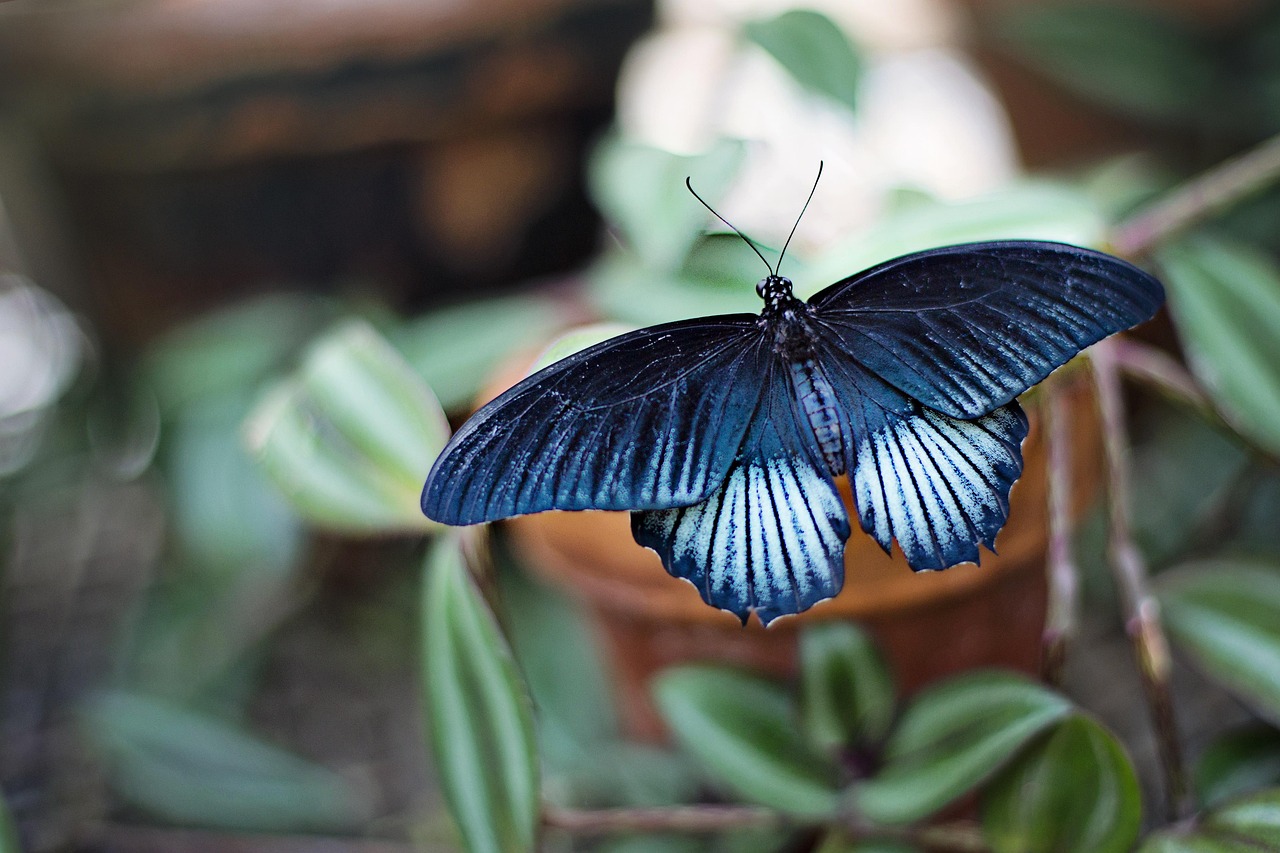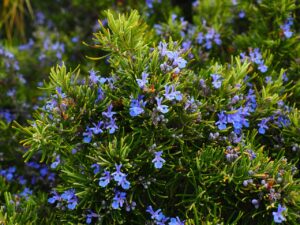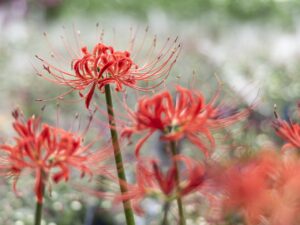What Plants Attract Butterflies. Imagine lounging on your patio, sipping a cold drink on a warm summer day, and being surrounded by the beautiful fluttering of colorful butterflies. Sounds magical, doesn’t it? You can easily create this dreamy scenario in your garden by attracting butterflies with the right plants.
Butterflies are not only delightful to have around, but they also serve a crucial role in pollinating plants. By selecting the right plants, you can create a haven for these enchanting creatures and support the overall health of the environment.
Key Takeaways:
- By selecting the right plants, you can attract butterflies to your garden and create a magical outdoor space.
- Butterfly-friendly plants serve as food sources for caterpillars and nectar for adult butterflies.
- Native plants are highly attractive to butterflies because they have evolved together over time.
- Fragrant flowers can entice butterflies from a distance and add to the beauty of your garden.
- Long-blooming perennials provide a continuous supply of nectar for butterflies throughout the season.
Understanding the Importance of Butterfly-Friendly Plants
If you want to attract butterflies to your garden, it’s essential to create a butterfly-friendly environment. This means planting the right garden plants that attract butterflies and incorporating features that provide resources for these creatures. By doing so, you can increase the likelihood of butterflies taking up residence in your garden.
Butterfly-friendly plants are those that provide nectar for adult butterflies and serve as food sources for their caterpillars. When selecting plants to attract butterflies, it’s important to consider both the quality and quantity of nectar they offer. Native plants are an excellent choice as they have evolved alongside butterflies and provide familiar food sources.
Including a variety of butterfly-friendly plants in your garden also promotes the overall health and survival of butterfly populations. Butterflies need diverse habitats with different plant heights and structures to thrive. By incorporating a mixture of flowers, shrubs, and trees, you can create an appealing environment that caters to their needs.
In addition to food sources, butterflies also need water and shelter. Incorporating features such as a shallow dish of water or a butterfly house can enhance your garden’s attraction for butterflies.
Native Plants: A Favorite among Butterflies
If you want to create a garden that attracts butterflies, it’s essential to include plants that are native to your area. Native plants have co-evolved with local butterfly populations, making them a crucial food source and habitat.
Some popular native plants for butterfly gardens include milkweed, black-eyed susans, coneflowers, and asters. These plants offer nectar-rich blooms that attract adult butterflies, but they also serve as host plants for their caterpillars. By including these plants in your garden, you can create a thriving ecosystem for butterflies.
Native plants also come with a variety of other benefits. They are well adapted to local soil and weather conditions, making them low maintenance and a great choice for environmentally conscious gardeners. Additionally, they often require less watering and pest control compared to non-native species.
When selecting native plants for your butterfly garden, consider the height and structure of the plants. By incorporating both ground covers and taller flowering shrubs, you can create a diverse habitat that appeals to a wide range of butterfly species.
- Popular native plants for butterfly gardens:
- Milkweed
- Black-eyed susans
- Coneflowers
- Asters
Incorporating native plants into your garden not only supports local butterfly populations but also adds beauty and diversity to your outdoor space.
The Allure of Fragrant Flowers
In addition to their vibrant colors, certain plants that butterflies love produce delightful fragrances that attract these pollinators. By incorporating fragrant flowers into your garden, you can increase its appeal to butterflies and create a calming and inviting atmosphere.
Lilacs are a popular choice of fragrant flower that butterflies love. Their distinct and sweet aroma is sure to entice these creatures from afar. Additionally, lavender is another fragrant flower that butterflies can’t resist. Its soothing fragrance has a calming effect on both humans and butterflies alike.
If you’re looking for a fragrant flower that blooms in the summer, phlox is an excellent choice. Its sweet scent and colorful petals attract a variety of butterflies and other pollinators. Another option is sweet alyssum which produces a delightful honey-like fragrance.
When selecting fragrant flowers for your butterfly garden, be sure to consider their placement in the garden. Placing them near seating areas or walkways allows you to enjoy their lovely scents as well.
Long-Blooming Perennials for Continuous Butterfly Attraction
Perennial plants that bloom for extended periods provide a consistent supply of nectar and are an excellent addition to any butterfly garden. These plants will ensure that your garden remains attractive to butterflies throughout the entire season.
| Plant Name | Height | Bloom Time |
|---|---|---|
| Blanket Flower | 12-24 inches | June to September |
| Purple Coneflower | 2-4 feet | June to August |
| Black-Eyed Susan | 1-3 feet | June to September |
| Coreopsis | 1-3 feet | June to September |
These perennials also increase pollinator activity, making them a great option for anyone looking to create a pollinator-friendly garden. Keep in mind that ensuring a steady supply of blooming flowers means regularly deadheading spent blooms to promote new growth.
By incorporating these plants into your garden, you can create a beautiful and continuous attraction for butterflies and other pollinators. Remember to give your plants enough space to grow and flourish, as overcrowding may hinder their development and reduce their attractiveness to pollinators.
Attracting Butterflies with Host Plants for Caterpillars
To truly support butterfly populations in your garden, it’s important to provide host plants for their caterpillars. These plants serve as food sources and breeding grounds for butterflies. By incorporating host plants into your garden, you can attract a variety of butterfly species and promote their survival.
Some popular host plant options for butterfly gardens include milkweed, parsley, fennel, and dill. Monarch butterflies, for example, rely on milkweed as the sole food source for their caterpillars. Incorporating milkweed into your garden not only attracts monarchs but also supports their population growth.
Parsley, fennel, and dill are host plants for the black swallowtail butterfly. These plants offer a nutritious food source for their caterpillars, ensuring their survival and growth into adult butterflies.
When selecting host plants for your garden, choose a variety of options to attract a diverse range of butterfly species. Ensure that these plants are healthy and free from pesticides, as these chemicals can harm butterfly populations.
With host plants in your garden, you can create a welcoming environment for butterflies and support their populations for years to come.
Creating a Diverse Habitat with Different Plant Heights and Structures
In order to attract butterflies to your garden, it’s important to create a diverse habitat that offers different plant heights and structures. Butterflies prefer environments that have a variety of plants, from ground covers to tall flowering shrubs. This provides them with different options for shelter, resting, and feeding.
One way to achieve this diversity is to incorporate plants of various sizes and structures throughout your garden. Ground covers like creeping thyme and moss phlox can serve as a low-level carpet, while tall shrubs like butterfly bushes and lilacs can offer a vertical element.
You can also consider adding plants with different growth habits, such as climbers like clematis or vines like honeysuckle. These plants can provide a unique structure for butterflies to rest and hide under.
Another option is to create different sections or zones in your garden, each with its own set of plants and structures. This can break up the space and offer a more diverse environment for butterflies to explore.
| Plant Height | Plant Structure | Examples |
|---|---|---|
| Low-Level | Ground Covers | Creeping Thyme, Moss Phlox |
| Mid-Level | Perennial Flowers | Coneflowers, Black-Eyed Susans |
| High-Level | Flowering Shrubs and Trees | Butterfly Bushes, Lilacs, Dogwoods |
| Unique Structure | Climbers and Vines | Clematis, Honeysuckle |
By creating a diverse habitat with different plant heights and structures, you can attract a variety of butterfly species to your garden. Don’t be afraid to get creative and experiment with different plant combinations to find what works best for your space.
Butterfly-Friendly Herbs and Vegetables
Do you want to attract not only butterflies but also enjoy fresh herbs and vegetables from your garden? Incorporating butterfly-friendly herbs and vegetables is a win-win situation! These plants not only add beauty to your garden but also serve as a food source for butterfly larvae and adults.
Borage is a herb that bears blue flowers that not only attract butterflies but also bees and other pollinators.
| Butterfly-Friendly Herb | Description |
|---|---|
| Milkweed | This herb serves as both a host plant for the monarch butterfly larvae and also produces a nectar that adult butterflies can feed on. |
| Dill | Dill is a host plant for the black swallowtail butterfly larvae while its yellow flowers attract many butterfly species. |
| Parsley | Parsley is a host plant for the black swallowtail butterfly larvae, and its nectar is irresistible to various butterfly species. |
Lettuce and Kale are two popular vegetables that are also butterfly-friendly. They provide a source of food for caterpillars and nectar for adult butterflies as well.
Tip: You can also opt for flowering vegetables like peppers and tomatoes that attract butterflies with their vibrant colors.
By integrating these herbs and vegetables into your butterfly garden, you not only add variety to your garden but also support the butterfly population in your area.
Providing Water and Shelter for Butterflies
While food sources are essential for attracting butterflies to your garden, it’s also important to provide them with water and shelter. Butterflies need water to stay hydrated and to dissolve and excrete salts. You can create an appealing water source for butterflies by adding a shallow dish or birdbath to your garden. Place a few stones or pebbles in the water to give butterflies a landing spot and prevent them from drowning.
Shelter is equally important for butterflies, as it provides protection from harsh weather conditions and predators. You can incorporate shelter into your garden by adding rocks, logs, or even a butterfly house. These features create a diverse habitat that can attract a greater variety of butterfly species.
When designing your garden, consider creating different areas that provide various levels of shelter and moisture. For example, a small pond or oases of moisture in the form of wet sand or mud can provide ideal breeding grounds for some species of butterflies. Similarly, a mix of open and shaded areas can provide a diverse range of microclimates that cater to different butterfly species.
By incorporating water sources and shelter features, you can create an alluring butterfly haven that provides the essential resources needed for their survival.
Section 10: Maintaining a Butterfly Haven
Creating a butterfly garden is just the beginning – maintaining it properly is the key to keeping butterflies happy and healthy. Here are some tips to ensure your garden remains a butterfly haven:
- Watering: Keep the soil moist, especially during hot and dry weather. Butterflies need moist soil to lay their eggs.
- Pruning: Regularly prune your plants to encourage new growth and ensure a continuous supply of nectar. Deadheading spent flowers will also promote more blooms.
- Pest Control: Avoid using pesticides as they can harm butterflies and other pollinators. Instead, use natural pest control methods like companion planting and hand-picking pests.
- Seasonal Care: In colder months, protect your plants from frost damage with blankets or frost cloth. In warmer months, provide shade to prevent your plants from wilting in the heat.
By practicing these maintenance techniques, you can ensure that your butterfly garden remains a healthy and vibrant habitat for these winged creatures. Remember, attracting pollinators with plants is a continuous effort, and your hard work will pay off with the beautiful dance of butterflies in your garden.
Conclusion
Creating a butterfly garden is a delightful way to bring more beauty and vibrancy to your outdoor space. By selecting the right plants, you can attract various butterfly species and enjoy their magical presence throughout the season. Remember to choose butterfly-friendly plants that provide food sources for both adult butterflies and caterpillars, incorporate diverse plant heights and structures, and provide water sources and shelter features.
Maintaining your butterfly haven is also crucial to ensuring its sustainability. Regularly care for your plants, manage pests, and promote a healthy environment for your butterflies to thrive. With the right care and attention, your butterfly garden can become a long-lasting source of joy and fascination for you and your family.
So, what plants attract butterflies? There are many options, from native plants to fragrant flowers and long-blooming perennials. Consider incorporating butterfly-friendly herbs and vegetables into your garden as well for added culinary and visual appeal. Start your butterfly garden today and witness the captivating dance of these enchanting creatures in your own backyard.
FAQ
What are butterfly-friendly plants?
Butterfly-friendly plants are plants that attract butterflies by providing nectar for adult butterflies and food sources for their caterpillars. These plants are essential for promoting the overall health and survival of butterfly populations.
Why are native plants preferred by butterflies?
Native plants are preferred by butterflies because they offer familiar and nutritious food sources. These plants have evolved together with butterflies over time, making them an ideal choice for creating a butterfly garden.
Do butterflies prefer flowers with fragrances?
Yes, butterflies are attracted not only to the colors of flowers but also to their scents. Fragrant flowers can entice butterflies from a distance and make your garden even more appealing to them.
What are some long-blooming perennials that attract butterflies?
Some long-blooming perennials that attract butterflies include coneflowers, bee balm, black-eyed Susans, and lavender. These plants provide a continuous supply of nectar throughout the season, ensuring a constant attraction for butterflies.
Why are host plants important for attracting butterflies?
Host plants are important for attracting butterflies because they serve as food sources and breeding grounds for their caterpillars. By providing host plants, you can support the complete life cycle of butterflies in your garden.
What is the benefit of creating a diverse habitat for butterflies?
Butterflies prefer diverse habitats that offer different plant heights and structures. By incorporating plants of various sizes, you can create an appealing environment that caters to butterflies’ needs and enhances their attraction to your garden.
Can herbs and vegetables attract butterflies?
Yes, certain herbs and vegetables can attract butterflies. Some butterfly-friendly options include parsley, dill, fennel, and butterfly weed. These plants not only provide food sources for butterflies but can also be enjoyed for culinary purposes.
What can I do to provide water and shelter for butterflies?
To provide water for butterflies, you can create shallow dishes or saucers filled with water and place them in your garden. For shelter, incorporating rocks, logs, and butterfly houses can provide safe spaces for butterflies to rest and seek refuge.
How can I maintain a butterfly haven in my garden?
To maintain a butterfly haven, you should care for the plants by watering, pruning, and fertilizing as needed. Manage pests organically to avoid harming butterflies and other beneficial insects. Creating a sustainable environment by using natural and native gardening practices will also help attract butterflies year after year.





Pingback: Discover What Plants Keep Flies Away From Your Home
Pingback: Discover What Plants Like Banana Water: A Gardener's Guide - Botanic Plant Life
Pingback: Discovering the World of Botany: How Plants Eat
Pingback: Unlocking Gardening Secrets: What Plants Like Coffee Grounds